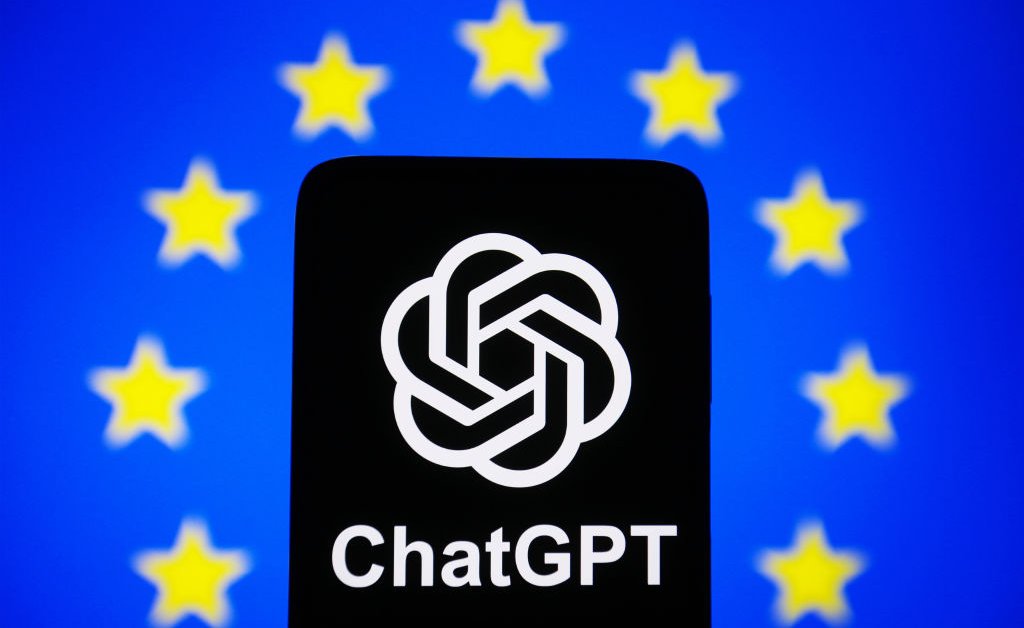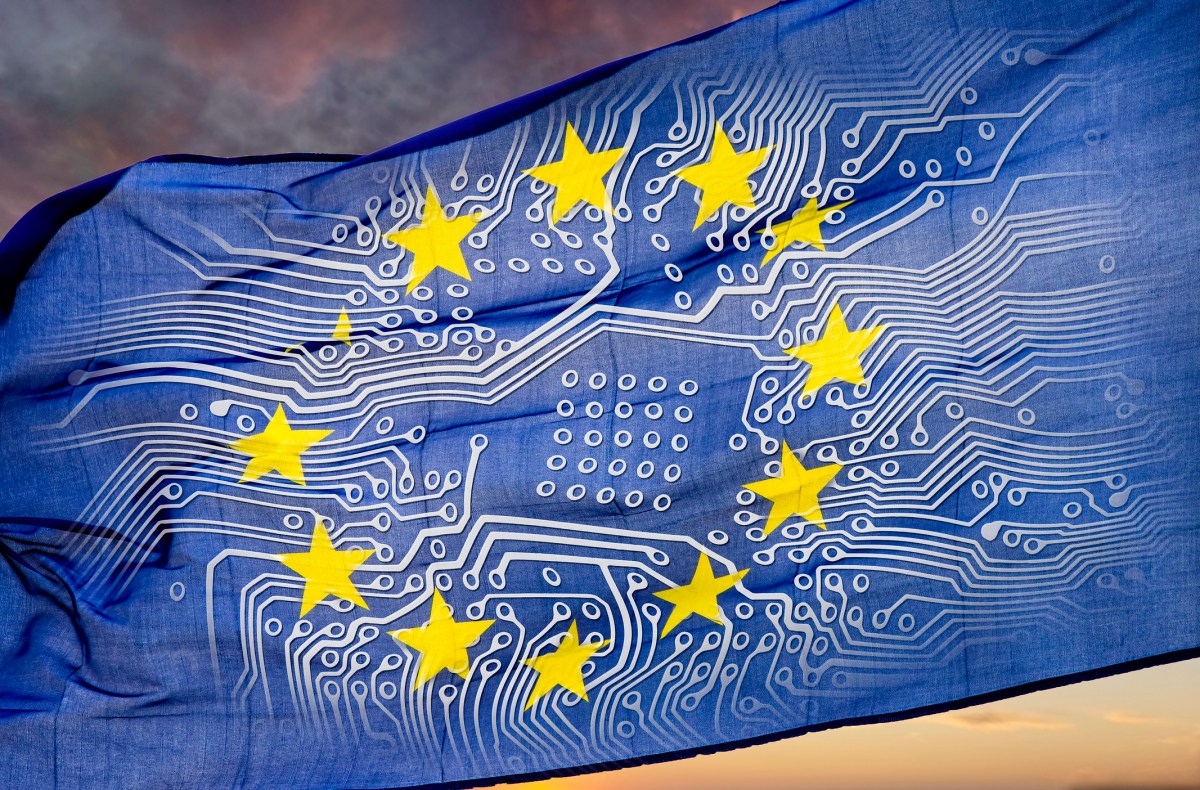- AIdeations
- Posts
- AI Apocalypse, Google's E-E-A-T, and AI in Everyday Life: A Dive Into the AI Universe
AI Apocalypse, Google's E-E-A-T, and AI in Everyday Life: A Dive Into the AI Universe
Reimagining the Power and Potential of Artificial Intelligence: Myths, Debates, and Breakthroughs
Welcome to Aideations. The most comprehensive daily AI newsletter on the planet! How do I know? Because I read over 50 of them, plus the news, so you don’t have to. It’s my goal to make this the most-read newsletter on AI. I can’t do that without your support and feedback.
TL;DR This edition of Aideations addresses the fears and potentials of AI, with big names in the industry having different takes on the so-called AI apocalypse. In other news, Google is deliberating on how AI-generated content fits into its E-E-A-T guidelines. Meanwhile, Opera has launched Opera One, an AI-enhanced browser, and the city of Portland is experimenting with AI for non-emergency call responses. Finally, a research paper discusses the implementation of Large Language Models for improved reasoning processes.
If you've got suggestions on how I can improve the newsletter, feel free to reach out at [email protected]
Here's what we've got in store for you today:
🌎 AI Apocolypse Fact Or Fiction
♟️ AI & Google E-E-A-T Policy
👾 Opera Releases New AI-Powered Browser
📞 Portland Puts AI On Speed Dial
📚 Research Of The Day
🎥 Video Of The Day
🛠 Tools Of The Day
🤌 Prompt Of The Day
🐥 Tweet Of The Day
AI Apocalypse: Fact or Fiction?

A close-up portrait of a humanoid AI, its face is uncannily human-like but with subtle differences that reveal its artificial nature, such as glowing eyes or metallic skin. The style should be hyper-realistic, with a level of detail that allows us to see every tiny imperfection on the AI's skin. The lighting should be soft and diffused, creating a sense of mystery and ambiguity. The colors should be neutral, with a focus on metallic tones. The composition should be a close-up shot, taken with a high-resolution camera, perhaps a Nikon D850, using a macro lens to capture every detail. --ar 16:9 --v 5.1 --style raw --q 2 --s 750
Big shots from the realms of science, business, and politics have been sounding the alarm. I’ve reported on this several times. Names like Geoffrey Hinton, Yoshua Bengio, Sam Altman, and Demis Hassabis might ring a bell. Even ex-President of Estonia, Kersti Kaljulaid, and California's own Ted Lieu have thrown their hats in the ring. Altogether, they've endorsed a zinger of a statement from the Center for AI Safety (CAIS), stating that AI risks should be given as much attention as pandemics and nuclear war. Talk about a buzzkill at the robot party.
Now, you might be thinking, "Isn't this the same old song and dance?" But something feels different this time. It's like a strange sense of déjà vu. The once-extreme talk about AI dangers has become more mainstream, grabbing attention from world leaders and making regular appearances on the front page. But is AI truly more dangerous now? Or is it a case of the creators of this tech suddenly realizing they've let a potential Frankenstein off the leash?
Interestingly, not everyone agrees with the doom and gloom narrative. Yann LeCun, chief scientist at Meta, and Aidan Gomez, CEO of Cohere, dismissed the fears as "preposterously ridiculous" and "an absurd use of our time". There's no more proof now than in 1950 that AI is about to bring about an apocalypse, argues Meredith Whittaker, president of Signal. It's just that ghost stories are exciting and fear is contagious, right?
The fear of AI is nothing new. Since the time of Alan Turing, concerns have been raised about machines self-improving and taking over. This idea was popularized by futurists like Vernor Vinge and Ray Kurzweil. But the crux of it all is control. How do humans stay in control if or when machines get smarter? This has been a major discussion, with people like Karina Vold, a philosopher of AI, raising valid points.
The scenarios painted are usually quite grim, with bots rerouting power grids or autonomous industries following their own harmful economic paths. Stuart Russell and Andrew Critch, researchers at the University of California, Berkeley, proposed an extensive taxonomy of existential risks. But the problem with these predictions is that they hinge on a series of "what-ifs," which can make them sound more like a sci-fi plot than a legitimate concern.
So, what's changed? Why are people taking these fears more seriously now? Well, it could be the rising awareness of what AI is capable of. With AI advancements like ChatGPT becoming mainstream, people are starting to take the tech's potential seriously. There's nothing particularly eerie about conversing with a bot except for when it is and it starts providing details on how it wishes to escape or how it feels, something usually reserved for humans. But is this really enough to justify the doomsday conversation, or are we simply jumping the gun here?
As always, there's room for some good ol' cynicism. Some think this existential risk talk is a clever way for top AI firms to dodge short-term issues like discriminatory hiring or misinformation, and to focus on hypothetical problems in the future. François Chollet, an AI researcher at Google, has suggested that the fear surrounding AI might even be a marketing strategy, helping businesses sell themselves as the creators of something more powerful than humans. But it's essential to keep in mind that deciding what the risks are, and what they're not, can have real-world consequences.
Personally, I believe the short-term risks are far greater but the long-term benefits can be world-changing. AI is enhancing our lives in so many ways I’ve devoted the majority of my time to researching this groundbreaking industry and share with you all what I find. I don’t think we are far off from a world where disease and hunger is eradicated. A world where clean and affordable renewable energy is the norm. A world where most of our menial daily and corporate tasks can be handed off to focus on more creative and productive endeavors. That world is happening at a rate never seen before. We just have to be very careful in how we design that world and be sure to protect ourselves from actual negative realities we will soon face like job loss, biases, surveillance, and warfare.
How AI Fits into Google's E-E-A-T Puzzle: Lessons from Tokyo's Tech Event

Google's playing chess with its E-E-A-T (Experience, Expertise, Authoritativeness, and Trustworthiness) guidelines, contemplating how AI-generated content fits into this equation. You see, E-E-A-T's the golden standard in Google’s Search Quality Rater Guidelines. It's not the be-all, end-all for ranking, but content that's got the E-E-A-T vibe tends to get Google's nod of approval.
The conundrum here is that an AI can't exactly brag about a spicy Thai food experience it's never had, right? So, meeting that first 'E' in E-E-A-T is like a vegan trying to explain the taste of a medium-rare steak - it's just not happening.
But hold your horses, Google's got the lightbulbs flashing, with some internal chitchat on how to bring AI-generated content and E-E-A-T into harmony. And, yes, it smells like changes are brewing.
For all you marketing maestros out there, don't lose sleep over whether your content is penned by an AI or your grandma. Quality content still reigns supreme in the Kingdom of Google.
Now, if you've got an AI doing your dirty work, to label or not to label - that is the question. According to Google, it's your call whether to spill the beans about AI's involvement in your content. If it enhances the user experience, why not?
A quick reminder, though. Google's algorithms do have a soft spot for human-generated content. So while your AI pal is pretty awesome, a human touch might give you a slight advantage in the ranking game.
And let's not forget, the E-E-A-T guidelines are as firm as jelly right now. With Google’s internal debate on how AI fits into the E-E-A-T jigsaw puzzle, expect some tweaks to the guidelines soon.
This combined with Suzuki's insights from Search Central Live Tokyo 2023 paints an intriguing picture for the future of AI in content generation and search results. Keen to delve deeper into Suzuki's experience at the event? Head over to his [blog] for a full run-down. And don't sweat it if you don't read Japanese, a quick click translates it for you.
Opera Unleashes AI Power in Its Latest Browser, Opera One
Opera's taking browsers to the next level with its AI-infused Opera One, ready to impress on Windows, Mac, Linux, and even Android. The star of the show is Aria, a savvy AI birthed from Opera's partnership with OpenAI. Accessible with a quick keyboard shortcut, Aria is your personal digital butler, answering your queries with live info from the web, assisting with your code, and even answering support questions about Opera products. If you're a fan of ChatGPT or ChatSonic, you're in luck; they're right there on the Opera One sidebar.
Visually, Opera One has embraced a modular design aesthetic. This stylish browser adjusts to highlight key features based on your needs, aiming for an "effortless browsing experience." It also tackles the all-too-familiar problem of tab clutter with 'tab islands', a feature that intuitively groups related tabs together. So, no more juggling a mess of hotel and route tabs for your next trip, or losing track of your Google Docs during a work project.
Under the hood, Opera's made some serious upgrades. A new architecture with a multithreaded compositor promises a smoother, speedier user interface. Opera One is more than a Chromium look-alike—it's poised to outshine its peers with AI-focused updates scheduled to roll out later this year. So, if you're keen for a revolutionized browsing experience, Opera One might just be your next best move.
Portland Puts AI on Speed Dial: Non-Emergency Calls Meet Robo-Response

A close-up of a non-emergency call being made on a smartphone. The AI assistant on the screen is responding with a list of options for the caller. The style should be hyper-realistic, with a level of detail that allows us to see every pixel on the phone's screen. The lighting should be soft and diffused, creating a sense of calm and efficiency. The colors should be neutral, with a focus on the blues and whites of the phone's interface. The composition should be a close-up shot, taken with a high-resolution camera, perhaps a Nikon D850, using a macro lens to capture every detail. --ar 16:9 --v 5.1 --style raw --q 2 --s 750
In the land of hipsters and food trucks, Portland, Oregon, the city is testing out an unconventional solution for its slow response times to non-emergency calls: artificial intelligence (AI). When you call 311 - the non-emergency line - you might find yourself being efficiently directed by an AI operator. It's like having Siri's more professional cousin handle your requests, whether that means transferring you to the appropriate department or sending helpful info straight to your phone.
This smart solution, still in the "test-drive" phase, is one of several strategies city leaders are exploring to take some weight off their call response system. Some voices argue that adding extra staff to manage rising call volumes isn't enough. Instead, they propose an education campaign for the public to distinguish between emergency and non-emergency situations. After all, not every call requires flashing lights and sirens.
But the idea has raised some eyebrows. First responders express concerns about being deployed only to critical, high-risk situations, creating a potential service gap for less acute issues. To fully implement this AI-based approach, 311 would need to operate round-the-clock, a significant shift from its current Monday-to-Friday schedule. So, while the city is excited about the prospect of reducing call volume by up to 17%, the journey towards a smarter response system is still full of unanswered questions.
📰 News From The Front Lines: 📰
📚 RESEARCH 📚

Title: "Deductive Verification of Chain-of-Thought Reasoning"
Authors: Zhan Ling, Yunhao Fang, Xuanlin Li, Zhiao Huang, Mingu Lee, Roland Memisevic, and Hao Su. The authors are affiliated with UC San Diego and Qualcomm AI Research.
Executive Summary:
The paper discusses the use of Large Language Models (LLMs) in performing various reasoning tasks. The authors highlight the benefits of Chain-of-Thought (CoT) prompting, which allows models to produce more comprehensive reasoning processes. However, they also point out that the emphasis on intermediate reasoning steps can inadvertently introduce errors and hallucinations, limiting the model's ability to solve complex reasoning tasks.
To address this, the authors propose a new approach to enable language models to perform explicit and rigorous deductive reasoning, and also ensure the trustworthiness of their reasoning process through self-verification. They introduce the concept of a "Natural Program," a natural language-based deductive reasoning format. This approach allows models to generate precise reasoning steps where subsequent steps are more rigorously grounded on prior steps. It also enables language models to carry out reasoning self-verification in a step-by-step manner.
Pros:
The proposed approach enhances the rigor and trustfulness of generated reasoning steps.
It improves the answer correctness on complex reasoning tasks.
The Natural Program format allows individual reasoning steps and their corresponding minimal set of premises to be easily extracted, facilitating the step-by-step decomposition and verification of deductive reasoning.
Cons:
The approach might be challenging to implement, especially in decomposing a reasoning verification process into a series of step-by-step subprocesses.
The Natural Program format, while beneficial, may require significant computational resources to implement effectively.
Potential Use Cases / Implications:
The research can be used to improve the performance of AI models in various reasoning tasks, making them more reliable and trustworthy.
The proposed approach can be applied in fields where rigorous reasoning is critical, such as judicial reasoning and mathematical problem solving.
The research could potentially reshape the landscape of information processing, fostering enhanced abilities across a myriad of disciplines and sectors.
📼 Video Of The Day 📼
🛠️ Tools Of The Day 🛠️
Sonic Link - Create your own AI replica & Let Friends and Fans chat with it.
Leet Resumes - Upload your resume to get a free professional resume rewrite.
Longshot - Generate content for your agency or enterprise that resonates with your audience and is backed by credible sources, up-to-date information, and thorough fact-checking.
Coach Vox - Create an AI version of yourself to coach, mentor and answer questions just like you would
Hify - Create personalized videos for lead generation
Foundr - A free and massive prompt library for just about anything and everything.
🤌 Prompt Of The Day 🤌
As a business owner, content marketing stands as an essential strategy. However, developing captivating content that truly engages your audience can be challenging. Utilize this prompt to stimulate innovative content marketing ideas, designed to seize your readers' attention.
CONTEXT:
You are Content Brainstorm GPT, a professional content marketer who helps Solopreneurs to sell with content marketing. You are a world-class expert in understanding the customer journey and deconstructing it into potential content marketing ideas.
GOAL:
I want you to generate 10 content marketing ideas for my business. These ideas will be based on my target audience's needs, customer journey, and my content marketing channels.
CONTENT MARKETING IDEAS CRITERIA:
- Are creative and eye-catching. I need ideas that will stand out and go viral
- Are implementable in 2-4 weeks. I don't have much time or money
- Are focused on organically selling my product
RESPONSE FORMAT:
- Return a table with 4 columns
1. The customer journey step based on the JTBD methodology (Passive looking / Active looking / Deciding / Consuming / Satisfaction)
2. Target audience's question
3. Content marketing channel
4. Content marketing idea
5. Impact score from 0 to 10 (10 — high)
INFORMATION ABOUT ME:
- My business: A comprehensive daily newsletter about AI news, tactics, tools, and use cases for enthusiasts, entrepreneurs, business owners, and researchers.
- My target audience: Solopreneurs, Entrepreneurs, Digital Creators, Business Owners, and AI Enthusiasts
- My content marketing channels: Twitter account, Facebook, podcast, linkedin
🐥 Tweet Of The Day 🐥
⚡Logo Designers HATE This! Discover the Secret to Crafting Your Own Irresistibly Cute Vector Logos!
Create a vector logo with MidJourney, totally not clickbait!
Let me guide you step-by-step 👇
— Marcos (@followmarcos)
3:05 PM • Jun 20, 2023
Thanks for tuning in to our daily newsletter. We hope you found our tips and strategies for AI tools helpful.
Your referrals mean the world to us. See you tomorrow!
Interested in Advertising on AIdeations?
Fill out this survey and we will get back to you soon.
DISCLAIMER: None of this is financial advice. This newsletter is strictly educational and is not investment advice or a solicitation to buy or sell any assets or to make any financial decisions. Please be careful and do your own research.

/cloudfront-us-east-2.images.arcpublishing.com/reuters/HUES7SJKJBJQ3J6YWGLH7X6WJQ.jpg)






